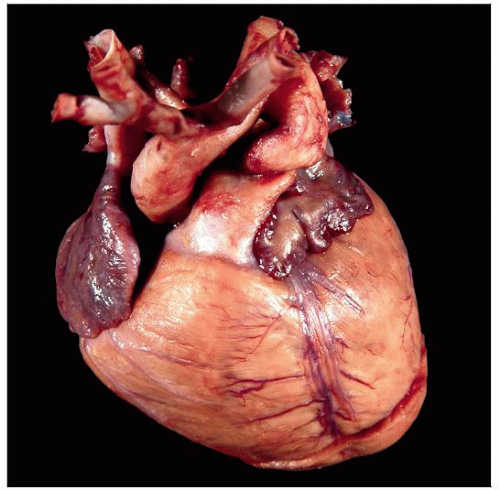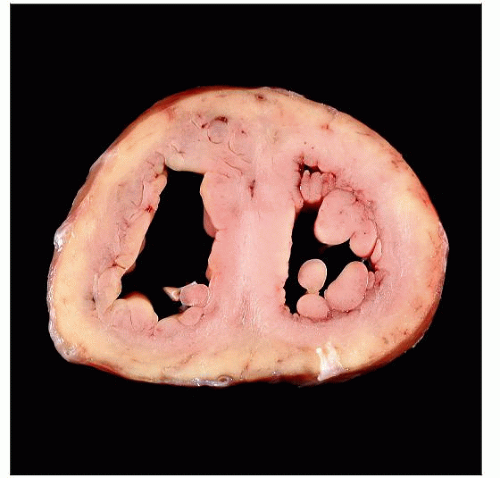Fatty Acid Metabolic Disorders
Monica P. Revelo, MD, PhD
Dylan V. Miller, MD
Key Facts
Terminology
Inherited disorders due to defects in mitochondrial fatty-acid β-oxidation pathways; there are at least 12 diseases with distinct enzyme or transporter deficiencies
Clinical Issues
Cardiac: Sudden infant death, cardiomyopathies, arrhythmias
Metabolic: Hypoketotic hypoglycemia
Other: Rhabdomyolysis, hepatic failure
Microscopic Pathology
Vacuoles in myocardial fibers
Positive stain for neutral lipids
Ancillary Tests
Electron microscopy: Myofibrils replaced by bizarre-shaped mitochondria with crystalline inclusions and accumulation of fat vacuoles
 Anterior view of the heart from a 2-day-old male with a fatty acid metabolic disorder shows enlargement and a globular shape. |
TERMINOLOGY
Synonyms
Fatty acid oxidation disorders (FAOD)
Definitions
Heterogeneous inherited autosomal recessive disorders due to defects in mitochondrial fatty-acid β-oxidation pathways; there are at least 12 diseases with distinct enzyme or transporter deficiencies
ETIOLOGY/PATHOGENESIS
Most Common Genetic Abnormalities
Medium-chain acyl-coenzyme A dehydrogenase (MCAD): A985G
Long-chain 3-hydroxyacyl coenzyme A dehydrogenase (LCHAD): G1528C
Carnitine transporter defect (CTD): SLC22A5
Carnitine palmitoyltransferase 1A (CPT1A) and 2 (CPT2), mitochondrial trifunctional protein (MTP), very long-chain acyl-coenzyme A dehydrogenase (VLCAD) deficiency: Heterogeneous mutations
CLINICAL ISSUES
Presentation
Cardiac
Sudden infant death
Cardiomyopathy
Arrhythmias
Heart failure
Conduction anomalies
Metabolic
Episodic hypoketotic hypoglycemia
Metabolic acidosis
Other
Rhabdomyolysis
Muscle weakness
Hepatic failure
Peripheral neuropathy
Pigmentary retinopathy
Maternal hemolysis, elevated liver enzymes, and low platelets (HELLP syndrome)




